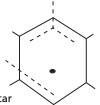Gastro Flashcards
Prehepatic causes of portal hypertension?
portal or splenic vein thrombosis, arteriovenous thrombosis
Hepatic causes of portal hypertension?
presinusoidal: Primary biliary cirrhosis. sinusoidal: cirrhosis, idopathic. post-sinusoidal: veno-occlusive disease
Posthepatic causes of portal hypertension?
Budd-Chiari syndrome, congestive heart failure, constrictive pericarditis
Clinical signs of chronic liver disease (general, hands, face, chest and abdomen)?
- General: cachexia, icterus, excoriation and bruising
- Hands: leuconychia, clubbing, Dupuytren’s contractues, palmar erythema
- Face: xanthelasma, parotid swelling, fetor hepaticus
- Chest and abdomen: spider naevi and caput medusa, reduced body hair, gynaecomastia and testicular atrophy
- Trou: Red.
Signs of hepatomegaly?
- Palpation/percussion: mass in RUQ that moves with respiration, smooth if malignancy, craggy/nodular if cirrhosis, pulsatile (TR in CCF)
- Auscultation: bruit over liver (hepatocellular carcinoma)
Underlying cause of hepatomegaly suggested by: tattoos and needle marks, slate-grey pigmentation, cachexia, mid-line sternotomy?
- infectious hepatitis
- haemochromatosis
- malignancy
- CCF
3 As suggesting decompensation of chronic liver disease?
Ascites (shifting dullness), asterixis, altered consciousness (encephalopathy)
Big 3 Cs causing hepatomegaly? 3 Is that might cause?
- Cirrhosis (Alcohol)
- Congestive cardiac failure
- Carcinoma (secondaries)
- Infectious (HBV and HCV)
- Immune (PBC, PSC, AIH)
- Infiltrative (amyloid and myeloproliferative disorders)
Important investigations for chronic liver disease/hepatomegaly?
- Bloods: FBC, clotting, U&E, LFT and glucose
- Ultrasound scan of abdomen
- Tap ascites
Tests to order if cirrhotic?
Liver screen bloods:
- autoantibodies and immunoglobulins (PBC, PSC, AIH)
- Hepatitis B and C serology
- Ferritin (haemochromatosis)
- Caeruloplasmin (Wilson’s disease)
- alpha-1 antitrypsin
- AFP (hepatocellular carcinoma)
Hepatic synthetic function: INR (acute) and albumin (chronic)
Liver biopsy (diagnosis and staging)
ERCP (diagnose/eclude ERCP)
Tests to order if suspecting malignancy?
- Imaging: CXR and CT abdomen/chest
- Colonoscopy/gastroscopy
- Biopsy
Complications of cirrhosis?
- Variceal haemorrhage due to portal hypertension
- Hepatic encephalopathy
- Spontaenous bacterial peritonitis
Scoring system used to classify cirrhosis?
Child Pugh classification
- Prognostic score based of: bilirubin/albumin/INR/ascites/encephalopathy
3 Cs for causes of ascites?
- Cirrhosis (80%)
- Carcinomatosis
- CCF
Treatment of ascites in cirrhotics?
- Abstinence from alcohol
- Salt restriction
- Diuretics (aim: 1kg weight loss/day)
- Liver transplantation
Causes of palmar erythema?
- Cirrhosis
- Hyperthyroidism
- Rheumatoid arthritis
- Pregnancy
- Polycythaemia
Causes of gynaecomastia?
- Physiological: puberty and senility
- Kleinfelter’s syndrome
- Cirrhosis
- Drugs, e.g. spironolactone and digoxin
- Testicular tumour/orchidectomy
- Endocrinopathy, e.g. hyper/hypothyroidism and Addison’s
Autoantibody in PBC?
antimitochondrial antibody (M2 subtype) in 98% increased IgM
Autoantibody in PSC?
ANA, anti-smooth muscle may be positive
Antibodies in autoimmune hepatitis?
anti-smooth muscle, anti-liver/kidney microsomal typ 1 (LKM1) and occasionally ANA may be positive
Cinical signs of haemochromatosis?
- slate-grey skin
- stigamata of chronic liver disease
- hepatomegaly
Scars to look for in patient with haemochromatosis?
Venesection, liver biopsy, joint replacement, abdominal rooftop incision
Evidence of complications in haemochromatosis?
- Endocrine: ‘bronze diabetes’, hypogonadism, testicular atrophy
- Cardiac: congestive cardiac failure
- Joints: arthropathy (pseudo-gout)
How is haemochromatosis inherited?
- Autosomal recessive on chromosome 6
- HFE gene mutation: regulator of gut iron absorption
- Homozygous prevalence 1:300, carrier rate 1:10
- Males affected at an earlier age than females- protected by menstrual iron losses
How does haemochromatosis present?
- Fatigue and arthritis
- Chronic liver disease
- Incidental diagnosis or family screening
Investigation to order for haemochromatosis?
- Raised serum ferritin
- Raised transferrin saturation
- Liver biopsy (diagnosis + staging)
- Genotyping positive
- Consider: blood glucose (diabetes), ECG/CXR/ECHO (cardiac failure), liver ultrasound/alpha fetoprotein (HCC)
Treatment for haemochromatosis?
- Regular venesection (1 unit/week) until deficient, then venesect 1 unit, 3-4 times/ year
- Avoid alcohol
- Surveillance for HCC
Which family members are screened if patient has haemochromatosis?
Iron studies (ferritin and TSAT) done in 1st degree relatives aged >20 years. If positive: liver biopsy, genotype analysis
Prognosis of haemochromatosis?
- 200 x increased risk of HCC if cirrhotic
- Reduced life expectancy if cirrhotic
- Normal life expectancy without cirrhosis + effective treatment
General clinical signs of splenomegaly?
Anaemia, lymphadenopathy (axillae, cervical and inguinal areas), purpura
Abdominal clinical signs of splenomegaly?
LUQ mass that moves inferomedially with respiration, has a notch, is dull to percussion and cannot get above/ballot. Estimate size and check for hepatomegaly.
Underlying cause of splenomegaly suggested by
- lymphadenopathy
- stigmata of chronic liver disease
- splinter haemorrhages, murmur etc.
- rheumatoid hands
- Haematological and infective
- Cirrhosis with portal hypertension
- Bacterial endocarditis
- Felty’s syndrome


